Table of Contents Show
On January 20, 2015, The Public Theater in New York City saw the birth of one of the most culturally significant plays to grace the stage. For the first time, a cast predominantly consisting of people of color took to the main stage and redefined popular media standards. This portrayal of America’s founding fathers rewrote the theatrical narrative, shining a much-needed light on oppressed artistry. Since then, global audiences have been feverishly asking the same question: whose story could follow up Hamilton? The answer: world-renowned author Alexandre Dumas.
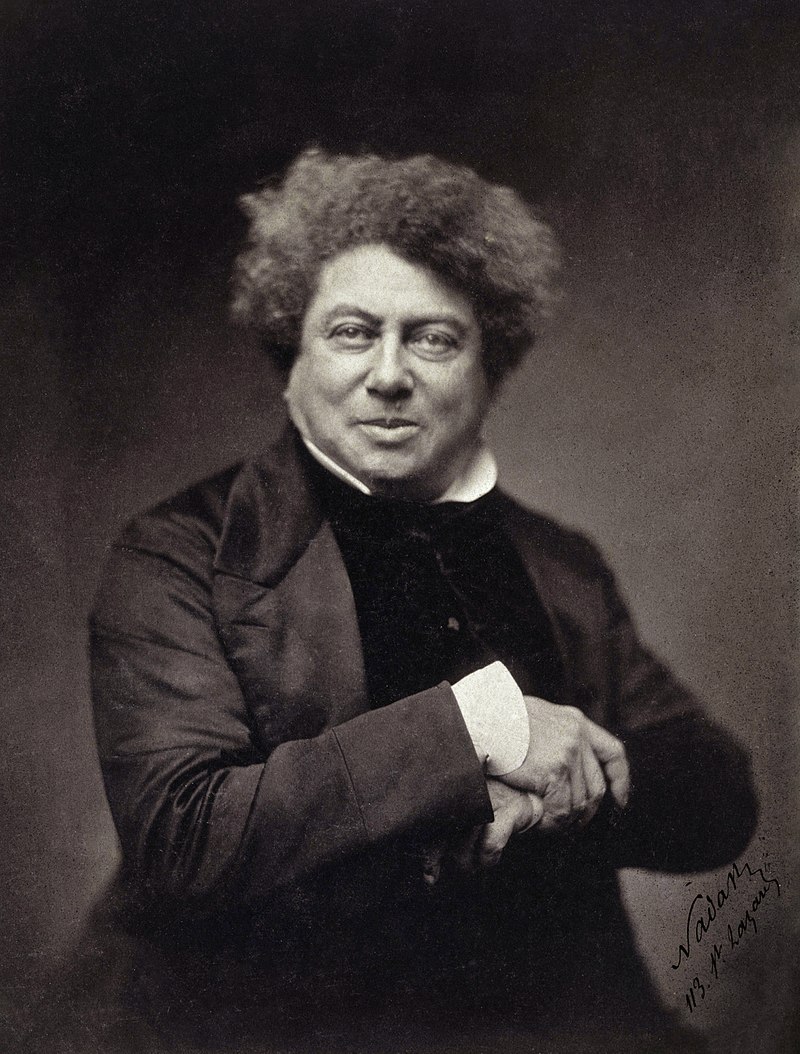
It’s fairly evident that Hamilton creator Lin-Manuel Miranda achieved a significant feat — managing to take a snapshot from the United States’ torrid, whitewashed past and morphing it into a cause for multi-cultural celebration and awareness. The aftermath of Hamilton’s release was so profound that it questioned whether something so novel could be replicated.
Fortunately, Alexandre Dumas’ tale of generations of black men overcoming years of adversity to become heroes in their fields would be a thrilling and inspiring follow-up. Like Alexander Hamilton, the concepts of legacy and personal conviction fueled Alexandre Dumas’ famed career. Though Dumas’s life and career were plagued with societal racism and self-destructive habits, his unflappable charm and undeniable talent make for a story nearly three-hundred years in the making.
History’s Finest
It is a popular trope that adding “based on a true story” to any show makes it that much more captivating. Knowing that the material is rooted in factual events has a grounding effect on audiences, adding a sense of tangibility and nearness to the story and its characters. It also allows the chance for more dedicated fans to further explore the subject matter outside of the scope of the told story. This was seen in Hamilton as it followed Alexander Hamilton’s career before, during, and after the American Revolution — a notable character in a dramatic period of history that made for an engrossing and familiar backdrop for the story being told.
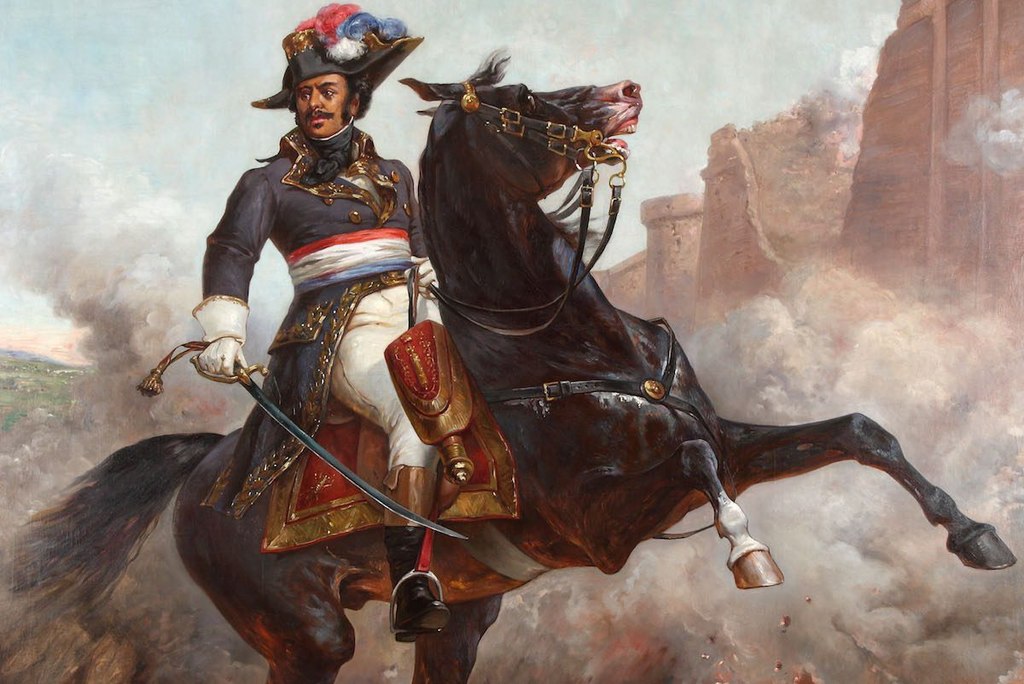
In Hamilton, a major element that defined Alexander’s personality and ambition was his lack of a family name. Illegitimate and effectively orphaned from a young age, Alexander Hamilton’s signature drive for success stemmed from a need to become someone. This mindset went on to impact many choices he’d come to make, from his marriage to his career. For audiences, this created a kinship in the universal need to make a lasting impact. People want to root for the underdog, to see someone overcome the litany of obstacles that plague the human experience, no matter the era. Despite his meager upbringing, the world would surely come to know the name Alexander Hamilton and this fact resonated with millions of watchers.
Fortunately for those looking for a spot of inspiration, the spirited up-and-comer story is abundant throughout history and is represented twice-fold for the Dumas family. To understand how Alexandre Dumas came into his position — a mixed-race writer with just enough social standing to hobnob with France’s elite — it’s important to acknowledge that his story started with his father, Thomas-Alexandre Dumas Davy de la Pailleterie. Thomas was born in 1762 to a minor French nobleman and his enslaved Mistress, Marie-Cessette Dumas, in French Saint Domingo. During this time, Thomas went on to study at the prestigious academy of Nicolas Texier de la Boëssière, where he first learned the art of swordsmanship from the Chevalier de Saint-Georges, Joseph Bologne, a fellow mixed-race nobleman from the French Caribbean.
After enjoying a life of relative luxury, Thomas followed a path taken by many young men of means and joined the French military. However, despite having the proper lineage to be recruited as a commissioned officer like the rest of his peers, Thomas’s lineage wasn’t officially recognized. He was resigned to joining as a private in the Queen’s Dragoons. To keep from besmirching the family name, Thomas’ father urged him to take on the alias ‘Alexander Dumas.’ Despite the setback, Thomas rose through the ranks during the political unrest that followed the French Revolution. He would eventually become the lieutenant colonel of France’s “Black Legion,” second to none other than his former schoolmaster, the Chevalier de Saint-Georges.
Thomas went on to become one of the most highly ranked generals of African descent in European history. Though Thomas would pass away before young Alexandre’s fifth birthday, his legacy left a lasting mark on the future storyteller, fostering Alexandre’s deep interest in history and adventure that would be the foundation of much of his work. Many would feel shame and anger for the circumstances that the Dumas family to France and the perpetual stigma it would bring. Alexandre took great pride in his father’s career, often bransishing his accomplishments as a badge of honor to his naysayers. Thomas had a more direct influence on his son’s career and inspired one of Alexandre’s most beloved characters, the Three Musketeers’ heroic protege, D’Artagnan.
A Momentous Rise
After their father’s untimely death in 1806, Alexandre Dumas’ family found themselves in a bad way. Marie-Louise Labouret, Dumas’ mother, was continually denied the widow’s pension customarily awarded to retired or fallen soldiers’ families. Barely able to make ends meet through her work in a tobacconist’s shop, Dumas and his older sister were raised in poverty. While in school, Alexandre wasn’t known for his grades — even if his family had been able to afford adequate schooling, he, ironically, had little aptitude for higher education. He did, however, have a knack for penmanship, his skill for handwriting becoming so prominent that he dropped out of school to study to become a notary.
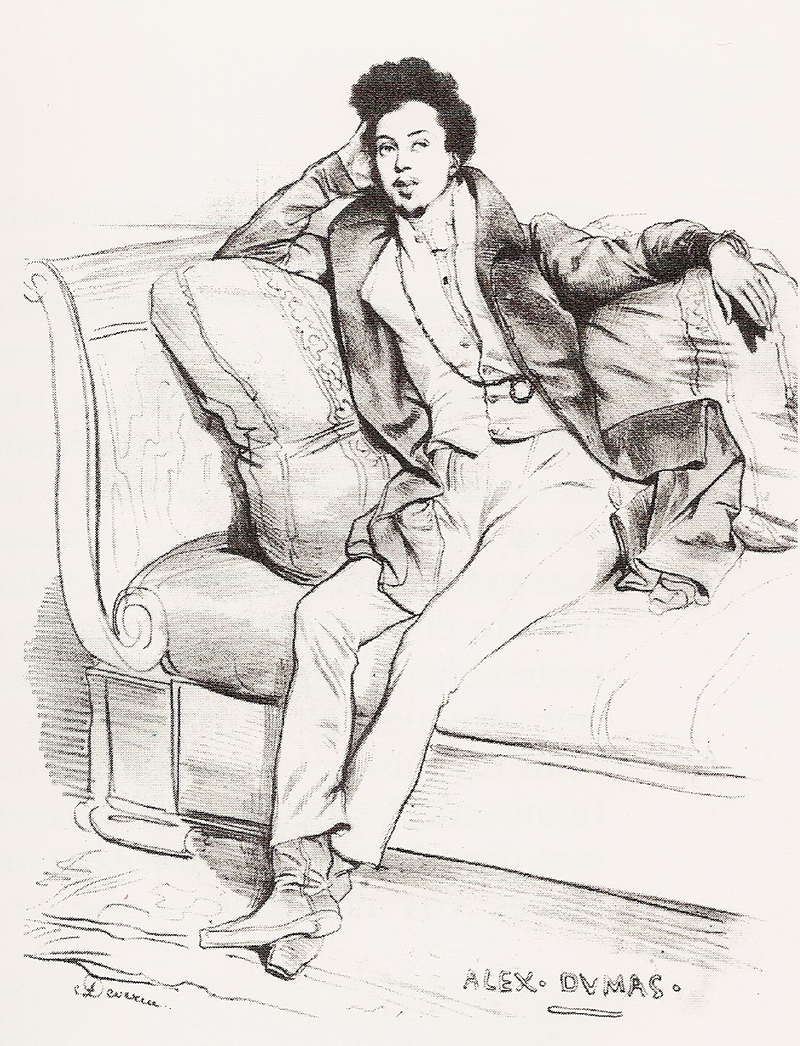
At the age of 20, Alexandre moved to Paris to further study literature and supplemented his income by working as a scribe for the Duc d’Orléans, who would later be crowned King Louis Phillippe of France. During this time, Dumas established a passion for creative writing, spending his free time authoring musicals, comedies, and dramas. Dumas’ romantic style found great success with his Parisian audience. The popularity of his plays Henry III and His Courts and Christine awarded Dumas with the financial independence to dedicate himself fully to his craft, becoming a full-time author.
A few years later, after the July Revolution ousted King Charles X from the throne and installed King Louis Phillipe in his stead, the French economy began to rally, bringing on a period of increased income and decreased political censorship that saw Dumas’ career truly flourish. After a stint writing travel guides, Dumas switched his focus to writing novels. From 1839 to 1841, he published a collaborative series of sensational historical true crime stories, as well as a memoir of a close friend’s time during the Decembrist Revolt in Russia — a piece that got Dumas banned from Russia by Czar Nicholas I. Despite the persistent racism that shadowed his career, Alexandre Dumas’ star was on the rise.
1844 marked the height of Dumas’ career, during which he published three of his most celebrated and long-lasting works, The Three Musketeers, The Count of Monte Cristo, and The Corsican Brothers. His works gained eager traction and were translated into nearly 100 different languages, and he was lauded for having written over 100,000 pages during his forty-year career. He was also known for the variety of genres he produced, from historical mysteries to paranormal fantasy, Dumas even penned one of the world’s earliest werewolf novels, The Wolf Leader. In the 150 years since his death in 1870, Alexandre Dumas’ works have been adapted into over 200 films and stage productions. Among some of the notable appearances in some of his more recent adaptations include Leonardo DiCaprio in The Man in the Iron Mask and Mickey Mouse and friends in Walt Disney’s 2004 Mickey, Donald, Goofy: The Three Musketeers.
The Pride That Cometh
Every good story requires a conflict — a reminder that the protagonist is human and flawed but inspired to overcome their bitter circumstances. Hamilton had the Reynolds Pamphlet, and, likewise, Alexandre Dumas had his fair share of controversy as well. It is widely accounted that the overly welcoming and brash nature that made Dumas well-liked among his peerage also invited plenty of opportunities for his generosity to be exploited. Dumas’ finances took hit after hit from failed business ventures and ill-advised investments in his later years.
In 1840 Dumas married French actress Ida Ferrier. Although the couple never had children of their own, Dumas had already had two children by the time they’d married and at least two more acknowledged-but-illegitimate children by the time he passed away in 1870. In fact, as was common among French upperclassmen of the period, Dumas was known to have dozens of mistresses throughout his lifetime. He was known for showering his lady callers with expensive gifts, so much so that it became somewhat of a known perk of being friends with Dumas.
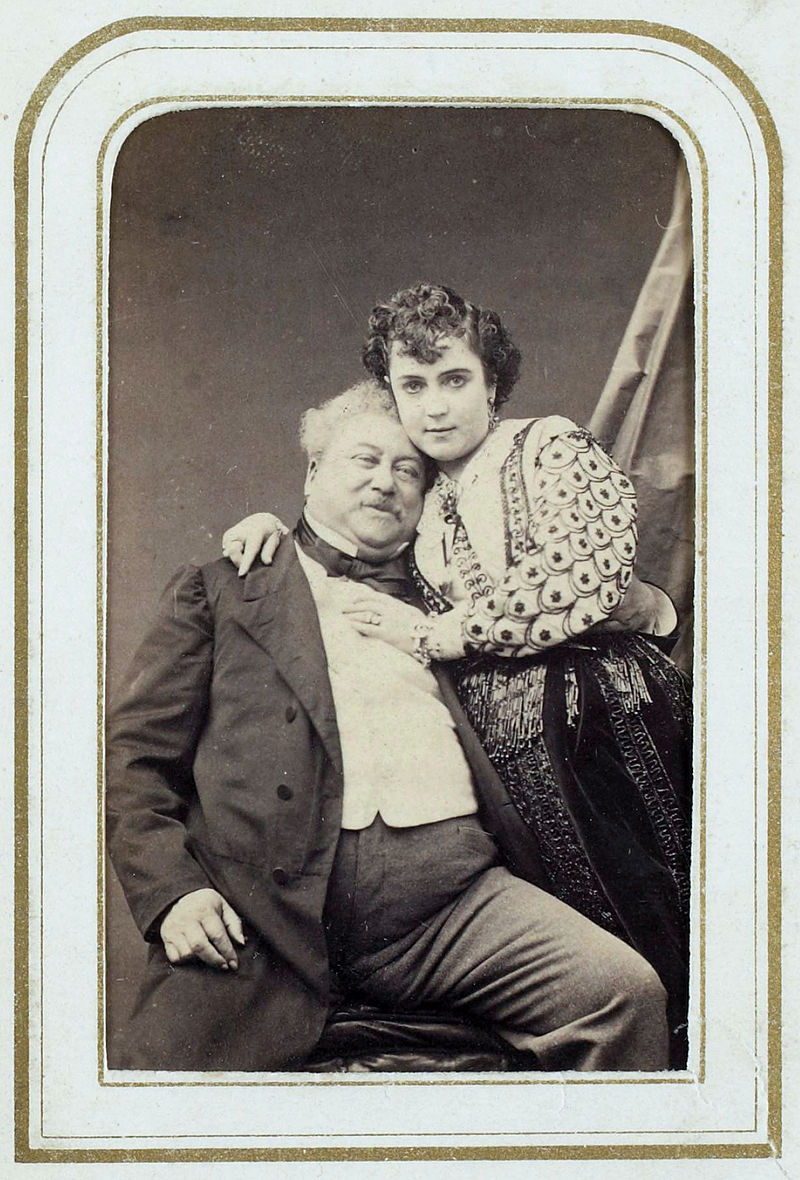
Women weren’t the only aspect of Dumas’ life where he was prone to overindulgence; Alexandre was a larger than life personality, something that his lifestyle reflected in abundance. Dumas showed little self-control or fiscal responsibility in his life, from regularly throwing opulent feasts for strangers to frequently overpaying debt collectors — he enjoyed making friends and then spoiling them, traveling, and genuine comfort. Alexandre was known for overpaying his debtors for the sake of goodwill. Indeed, while Dumas’ laissez-faire attitude made him added to his magnetic appeal in French society, it would prove to be unsustainable in the longterm.
Alexandre enjoyed the lifestyle of a playboy literary genius for years until his romantic writing style — and outspoken political views — began to fall out of favor in the latter half of the 19th century. To appease his growing debts, in 1848, Dumas was forced to sell his opulent estate, the Château de Monte-Cristo, but that seemingly was only the beginning of his problems. Dumas lost a considerable amount of money in several failed attempts at business ownership, including the short-lived Theatre Historique, several low-yielding newspaper companies, and financially backing the newly befriended Giuseppe Garibaldi in his effort to unionize Italy.
Alexandre Dumas flitted from fancy to fancy, his lascivious bohemian lifestyle leaving little room to care about preparing for the future in his later years, and his career refused to rally as it had done so many times throughout his career. His lascivious behavior pushed away his son and heir to his legacy, Alexandre Dumas fils, and Dumas soon found himself penniless and alone. In 1870, in poor mental and physical health, Dumas was taken in by his son and cared for until his death on December 5, 1870, at 68.
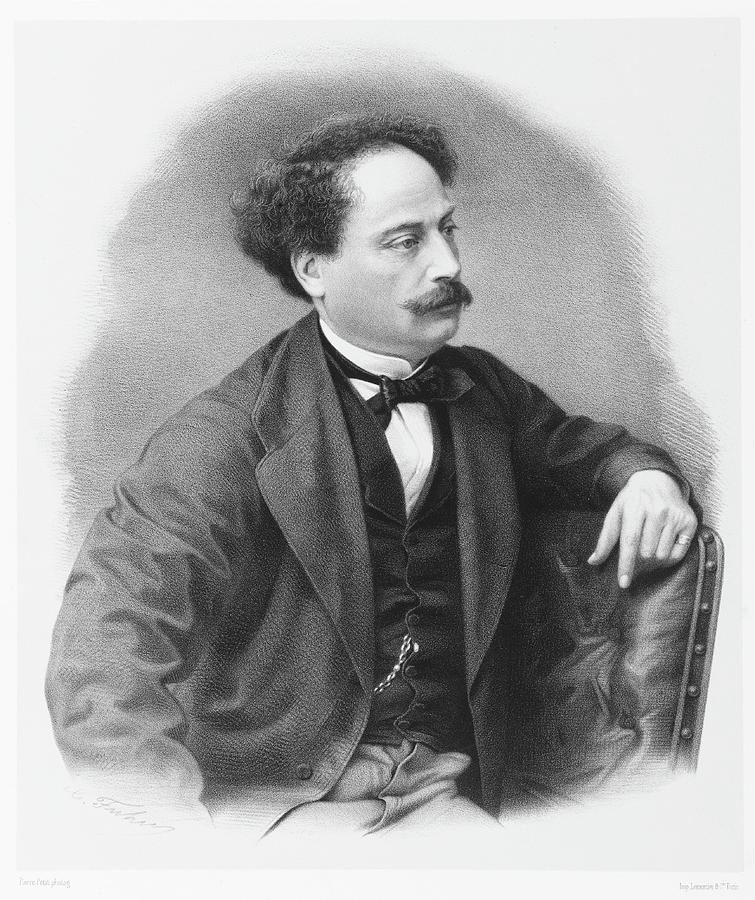
Although he died in relative obscurity, Dumas’ contributions to the creative arts did not go completely unnoticed. In 1970, the Alexandre Dumas Paris Métro was christened in his honor, and the Château de Monte-Cristo has since been restored to its former glory and repurposed as a museum. In 2002, the French government relocated Dumas’ ashes to the mausoleum of the Panthéon of Paris, where he will eternally reside amongst many other French luminaries, such as Marie Curie and Victor Hugo.
Broadway Presents…
Many say that it’s the journey that counts, not the destination. For some, though, hills and valleys along the way lead to an ending that persists, continuing to inspire others for generations. For Alexander Hamilton, it was a flourishing country governed by a constitution he’d helped design. For Alexandre Dumas he left behind the foundation for centuries of adventure and creative inspiration, spawning numerous plays, ballets, movies, and more.
However, much like with Miranda’s Hamilton, Alexandre Dumas’ story leaves the most lasting impact on the marginalized and underappreciated. Miranda’s musical brought to surface the plight of representation for non-white visionaries. An overview of Dumas’ family history and career is picture proof that this is a struggle that has been ongoing for longer than history would have most believe; people of color are valuable. Black voices are valuable.
Despite being counted among one of literature’s most famed classical writers, many don’t know that Alexandre Dumas was black. Despite helping to secure France’s independence, many people have never heard of Thomas-Alexandre Dumas or the Black Legion. Despite the social stigma he faced throughout his career, Alexandre Dumas was proud of his father’s achievements and unashamed of his ancestry. While he had many flaws, his persistence and mastery of his field was and is cause for celebration.
“Un Pour Tous, Tous Pour Un”
The acknowledgment of the deeply flawed nature of man along with the celebration of those mavericks’ history has overlooked make for the stories the world needs most. These attributes made Hamilton an interesting story to watch, while Lin-Manuel Miranda’s delivery made Hamilton into the paragon it is today.
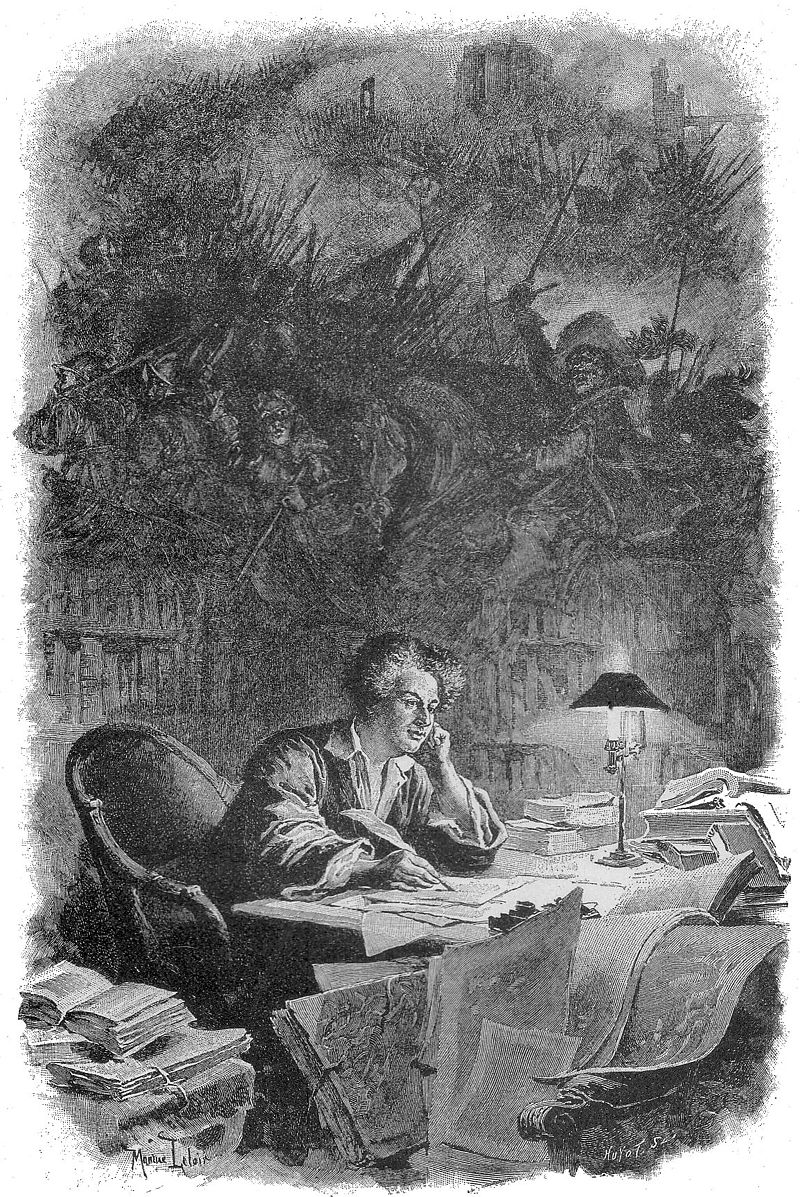
From the plot to the casting, Hamilton was created to commemorate unsung heroes. It brought about a wave of consideration and inventiveness that revitalized an oppressed community, thusly setting a new precedent in storytelling. Much like with its predecessor, the next big cultural phenom should come from a story the masses didn’t know needed to be heard that will highlight how powerful some of history’s most overlooked voices can be — a story like Alexandre Dumas’.
